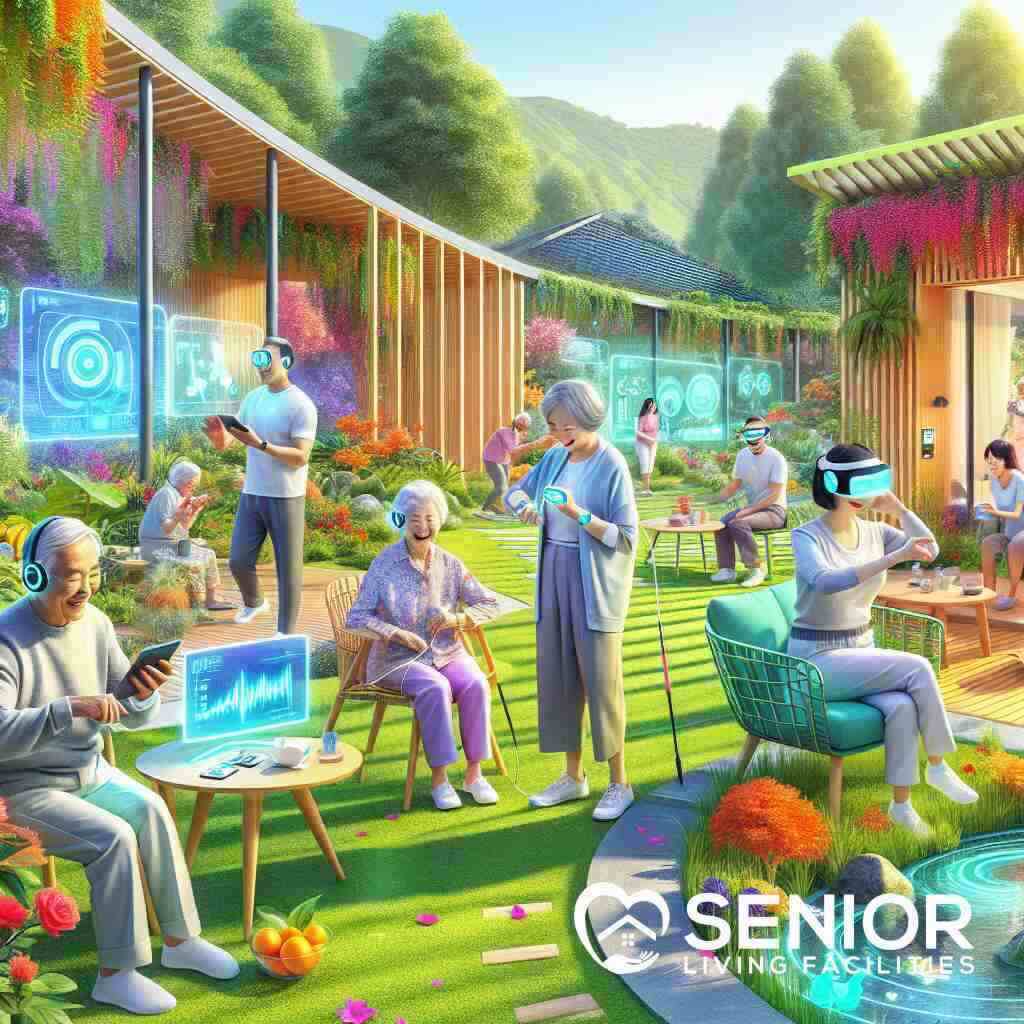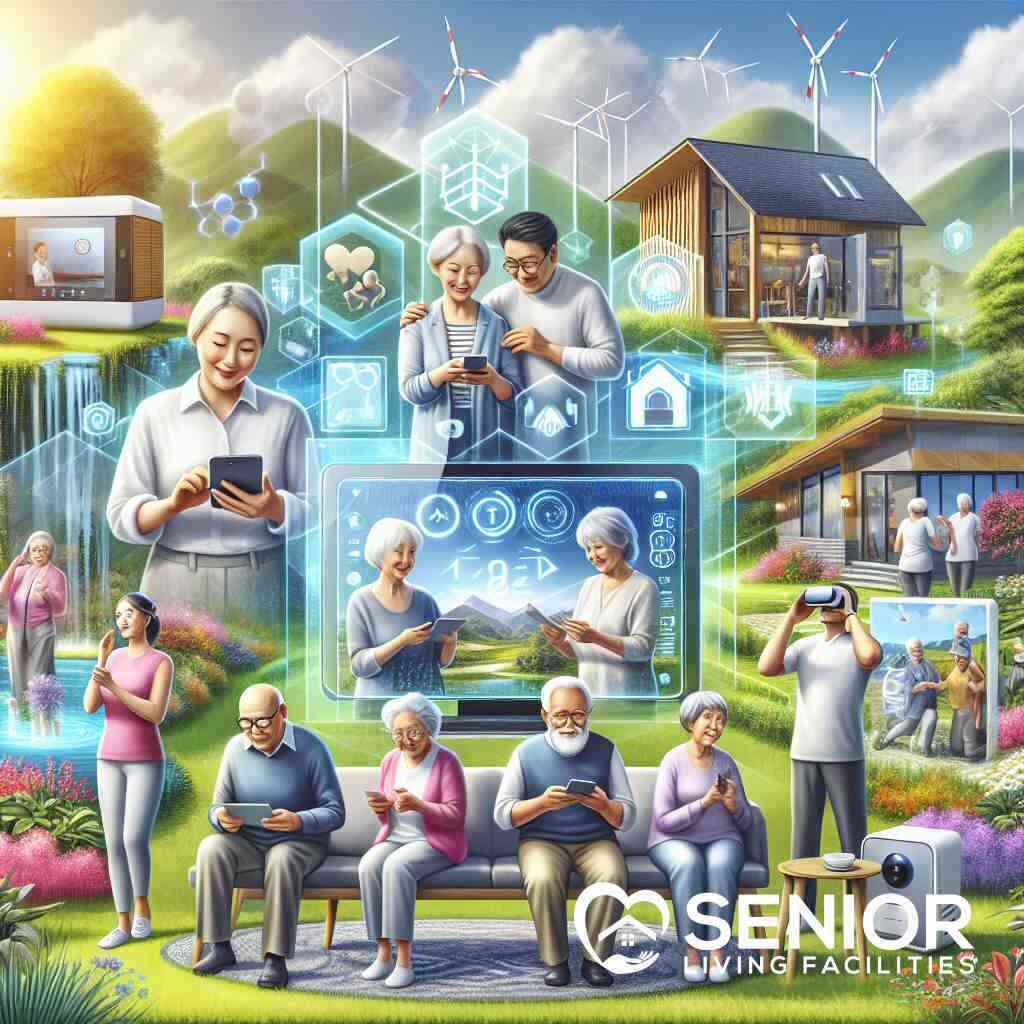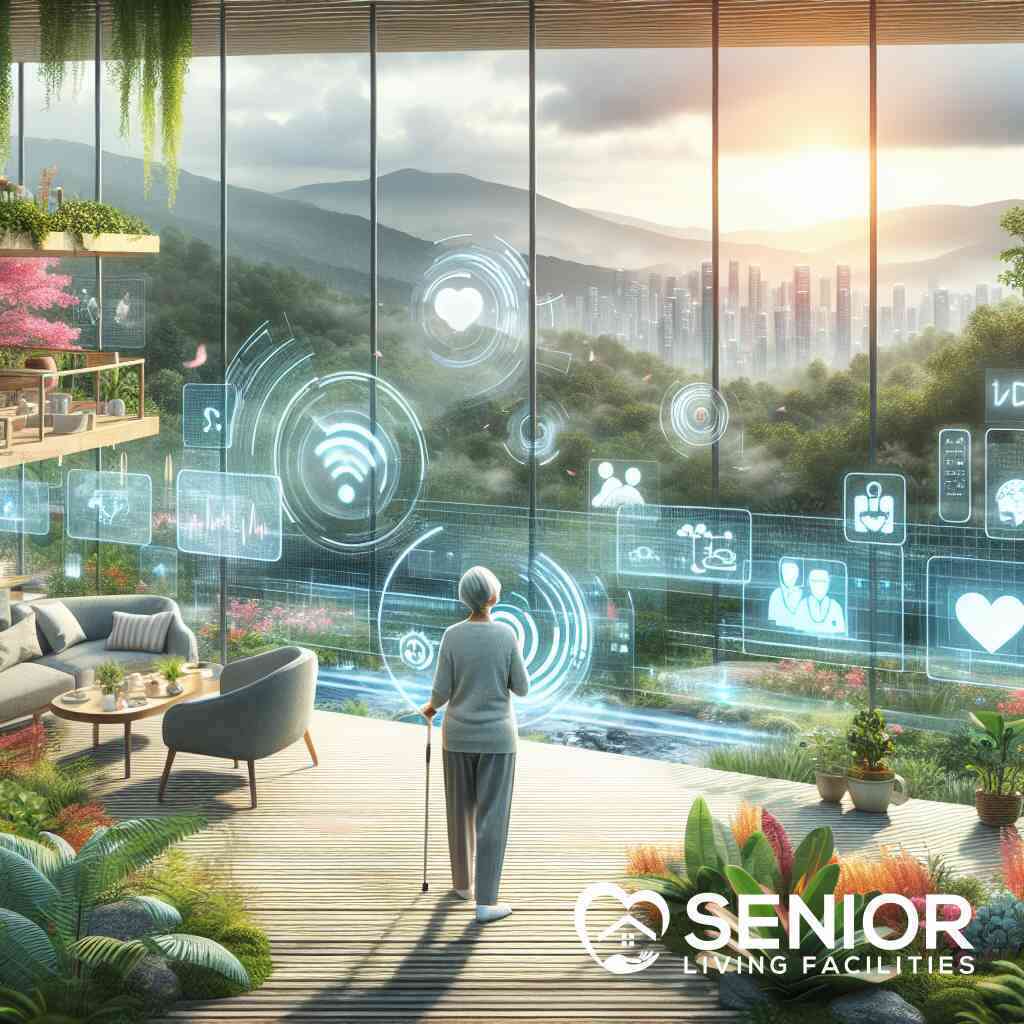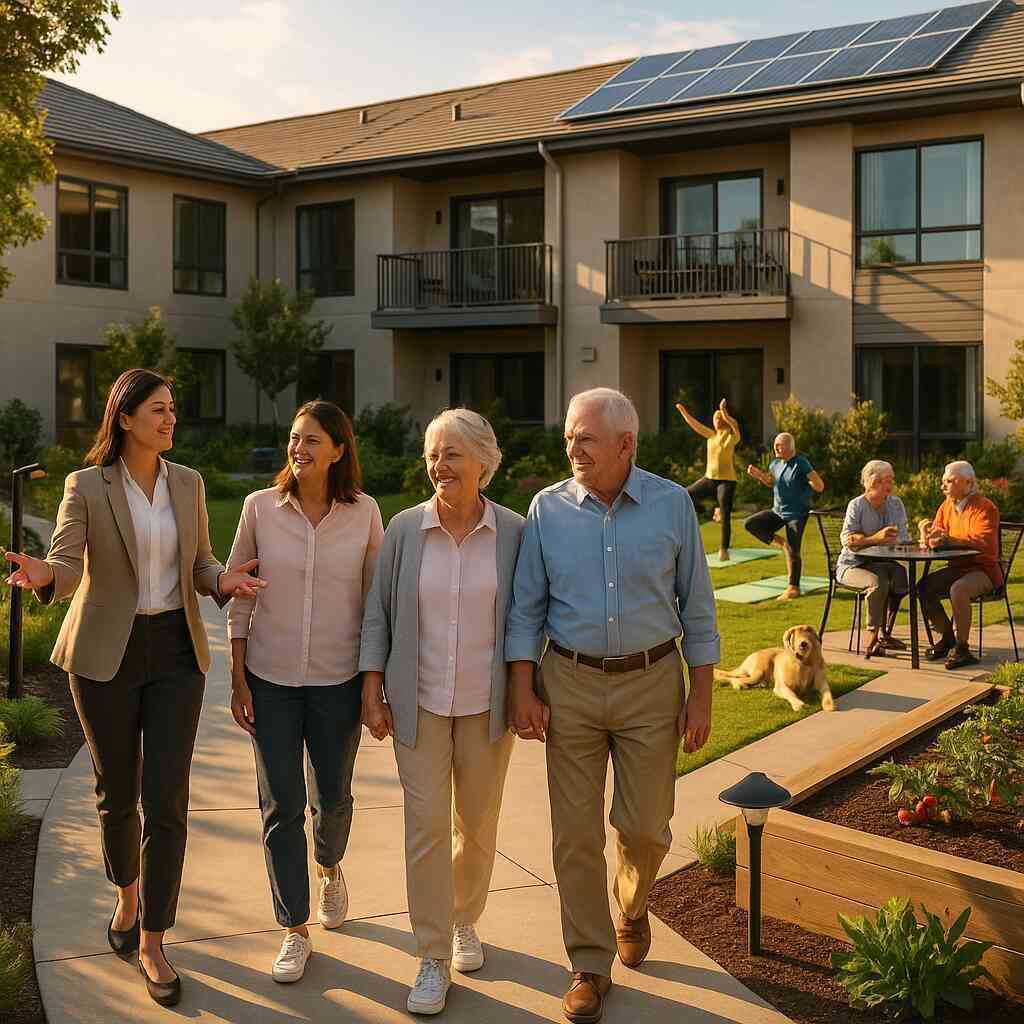
Understanding the Role of Technology in Modern Senior Health
July 14, 2025
Introduction to the Digital Revolution in Senior Health Care
The Intersection of Technology and Elderly Well-Being
d In today’s rapidly evolving world, the fusion of technology and senior health care has created a paradigm shift, enhancing the quality of life for older adults. Innovative tools and digital health innovations for seniors are bridging gaps in traditional care, offering solutions that were once unimaginable. This intersection of technology and elderly well-being represents a transformation that promises to yield significant benefits. From personalized health monitoring systems to virtual consultations, technology is becoming an integral part of senior health care, fostering an environment of safety, independence, and overall well-being.
Why Technology Matters for Senior Living Facilities
Technology plays a pivotal role in modernizing senior living facilities, allowing for improved connectivity and tailored health solutions. With the availability of modern elderly health technology, senior communities can now offer enhanced care services, promoting independence while delivering critical medical support. Facilities that integrate technology provide an engaging and supportive environment, enabling seniors to maintain their autonomy for longer periods. By incorporating various tech-driven solutions, these facilities enhance the day-to-day experiences of seniors, ensuring their needs are met with precision and empathy. Importantly, technology offers a practical approach to addressing the unique challenges faced by seniors, from chronic disease management to social isolation.
An Overview of Senior Living Facilities’ Technological Offerings
Senior Living Facilities are at the forefront of integrating technology to revolutionize elder care. Our platform showcases a myriad of technological offerings designed to meet the varied needs of seniors, including telehealth services for the elderly. By embracing cutting-edge digital tools, these facilities provide a comprehensive approach to senior health management, fostering a community where seniors can thrive. From smart home technology to virtual reality experiences, the technological landscape within these communities is continually evolving. The objective is to enhance the quality of life, promoting a future where seniors are empowered to live safely, comfortably, and fulfillingly in their chosen environments.
Technological Innovations Transforming Senior Health
Telehealth for Older Adults: Bridging Distances in Medical Care
Telehealth services for older adults have revolutionized the way seniors access medical care. This technology allows for remote consultations with healthcare professionals, which is particularly beneficial for those with limited mobility or residing in remote areas. By bridging geographic distances, telehealth offers a convenient and efficient alternative to traditional in-person visits, ensuring seniors can receive timely medical attention. Additionally, it reduces the need for travel, thus minimizing stress and the risk of exposure to illnesses. As telemedicine becomes more prevalent, it is contributing significantly to the overall improvement of health outcomes for seniors, providing them with the flexibility and accessibility to connect with healthcare providers from the comfort of their homes. The use of telehealth services for the elderly epitomizes this shift towards a digitally-oriented healthcare future.
Wearable Technology for Seniors: A New Era of Personal Health Monitoring
Wearable technology is ushering in a new era of personal health monitoring for seniors, offering tools to track vital health metrics such as heart rate, physical activity, and sleep patterns. These devices empower older adults by providing real-time data, facilitating proactive health management and early detection of potential health issues. Wearables are not intrusive and are designed with user-friendly interfaces, making them ideal for seniors who might not be tech-savvy. By offering insights into daily health patterns, wearable technology allows healthcare providers to better understand and cater to the unique needs of seniors. This advancement not only promotes independence but also enhances the quality of life, enabling seniors to make informed health decisions promptly. Seniors adopting these technologies are experiencing newfound autonomy, fostering a greater sense of control over their well-being.
Smart Home Technology for Aging: Fostering Independence and Safety
Smart homes in aging populations represent a significant transformation in how seniors maintain independence and safety within their living environments. These technologies are equipped with features such as automated lighting, climate control, and fall detection systems, all aimed at creating a seamless and secure living space for the elderly. By automating mundane tasks, smart home technology reduces the physical demands on seniors, allowing them to conserve energy for more meaningful activities. Moreover, safety is greatly enhanced with devices like smart locks and surveillance systems that offer peace of mind to both residents and their families. Smart homes in aging populations are rapidly becoming pivotal in promoting sustainable aging in place, fostering a reassuring sense of self-reliance among seniors.
The Rise of Virtual Reality Therapy in Senior Communities
The integration of virtual reality therapy in senior care facilities is redefining therapeutic interventions for older adults. Virtual reality technology offers immersive experiences that can stimulate mental engagement, enhance physical rehabilitation, and alleviate symptoms of conditions such as dementia. Through virtual reality, seniors can enjoy travel experiences, revisit fond memories, or engage in cognitive exercises within a safe, controlled environment. The sensory stimulation provided by virtual reality has shown promising results in improving mood and reducing the incidence of depression and anxiety among seniors. This innovative approach represents a paradigm shift in traditional therapy, offering limitless possibilities for enhancing mental and physical well-being. Virtual reality therapy in senior care continues to gain traction, making senior communities centers of innovation and holistic health improvement.

Enhancing Senior Living Communities with Digital Solutions
Assistive Technologies: Aiding Daily Activities and Improving Quality of Life
In recent years, assistive technology for the elderly has emerged as a pivotal force in enhancing the quality of life within senior living communities. These technologies are designed to simplify and support daily activities, promoting greater independence among seniors. From mobility aids to advanced communication devices, assistive tools cater to both physical and cognitive needs. Facilities that incorporate these solutions witness significant improvements in their residents’ overall well-being. The elderly are empowered with tools that enhance their autonomy while ensuring safety and comfort. Furthermore, assistive technologies can be tailored to individual needs, offering personalized care solutions that align with each senior’s unique lifestyle and preferences.
AI and IoT in Elder Care: Revolutionizing Daily Interactions
The integration of AI solutions in elder care and the Internet of Things (IoT) is revolutionizing daily interactions within senior living facilities. AI systems monitor health metrics in real-time and offer predictive analysis, while IoT devices ensure seamless connectivity and automation. Together, they create a responsive environment that adapts to the changing requirements of older adults. This technological synergy not only optimizes care delivery but also anticipates needs, minimizing the occurrence of potential health issues. As a result, seniors enjoy a significantly improved quality of life, with their daily routines enhanced by intelligent systems that promote convenience and transparency in care. These advancements underscore a transformative shift in elder care, promising a future where proactive measures are taken to uphold the health of every resident.
Empowering Through Digital Literacy: Engaging Seniors with Technology
Empowering seniors through senior digital literacy empowerment is crucial in ensuring that they benefit from technological advancements. Educational programs focused on digital literacy help seniors become comfortable and proficient with modern devices and applications. Mastery of digital skills enhances their independence and facilitates better communication with both family and healthcare providers. Familiar with their devices, seniors can access a range of services and information, enriching their lives and promoting social interaction. Technologically adept seniors are more likely to engage in online activities that keep them mentally and socially stimulated. This empowerment fosters a sense of confidence and connection to the outside world, which is vital for their overall happiness and health.
Smart Devices and Beyond: Creating Connected Health Networks in Senior Housing
Smart devices are integral to establishing connected health services in senior care networks within senior housing. These devices include wearable monitors, smart speakers, and automated home systems that allow coordinated healthcare delivery tailored to seniors’ unique needs. Data collected from smart devices can be securely shared with healthcare professionals, enhancing the precision and efficiency of medical interventions. This connectivity supports a networked approach to health management that emphasizes holistic care and promotes well-being at all stages of aging. By integrating smart technology, senior living communities offer their residents not only enhanced safety and convenience but also round-the-clock health monitoring and response solutions. This innovative model embodies the future of senior housing, where technology continually adapts to ensure the highest standard of care and quality of life for older adults.
Practical Implications of Technology in Senior Care
Tech-Assisted Independent Living and Its Benefits
Tech-assisted independent living presents numerous benefits for seniors, aiming to enhance their lives while preserving autonomy. With the incorporation of independent senior living solutions, older adults can efficiently manage day-to-day activities using technology that promotes safety and empowerment. These solutions often include wearable health monitoring devices, mobile apps for medication management, and digital communication tools to stay connected with family and healthcare providers. Such technologies enable seniors to live more independently, reducing reliance on caregivers and fostering self-sufficiency. Furthermore, tech-assisted living creates an environment where seniors can thrive, alleviating concerns of isolation by providing accessible social interaction avenues.
Navigating Age-Friendly Technology: Accessibility and Adaptation
As the technological landscape evolves, ensuring accessibility and adaptation remains a top priority in developing age-friendly technology. Devices and systems are now designed with intuitive interfaces and user-centric features, catering to the varying capacities of older adults. Age-conscious mobile devices offer simplified navigation and larger displays, accommodating seniors with limited dexterity or vision impairment. This user-friendly approach ensures that technology remains inclusive, allowing seniors to harness its benefits without feeling overwhelmed. Besides, educational programs focused on technology literacy further aid seniors in adapting to new tools, promoting confidence and proficiency in using digital advancements in their daily lives.
Ethical Considerations and Data Security in Health Technology
The widespread use of health technology necessitates heightened attention to ethical considerations and data security. As seniors increasingly rely on digital solutions, safeguarding personal health information becomes paramount. Establishing robust security protocols ensures that sensitive data remains protected from breaches and unauthorized access. Ethical practices in designing and implementing health technology focus on transparency and user consent, fostering trust among seniors and stakeholders. As technology permeates elder care, addressing these issues with integrity and responsibility is vital in maintaining confidence in tech-driven services while simultaneously safeguarding privacy.
Embracing Telemedicine as a Mainstream Senior Health Service
Telemedicine is rapidly emerging as a mainstream health service for seniors, transforming traditional healthcare delivery models. With telemedicine platforms for older adults, seniors can access medical consultations from the comfort of their homes, obviating the need for strenuous travel. This accessibility is especially beneficial for those with mobility challenges or residing in rural areas. Telemedicine also provides a convenient channel for ongoing health management, allowing for regular follow-ups and timely interventions. As the healthcare landscape continues to embrace digital solutions, telemedicine stands out as a crucial component of senior health services, offering efficiency, accessibility, and personalized care for seniors across the globe.

Conclusion: Paving the Path Towards a Technologically-Enhanced Senior Experience
Cultivating a Digital Future for Senior Living
As we navigate the evolving landscape of senior care, it is evident that technology holds the key to a promising future. By embedding technology into daily routines and care models, we are cultivating a digital future for senior living that prioritizes innovation, safety, and personalized care. The integration of advanced technological solutions enables seniors to engage in a more fulfilling and autonomous lifestyle, demonstrating the potential for technology to redefine aging. The seamless incorporation of digital tools into senior living communities is setting the stage for an enriched quality of life, seamlessly aligning with the needs and aspirations of older adults.
The Role of Senior Living Facilities in Supporting Technological Integration
Senior living facilities play a pivotal role in supporting technological integration by fostering an environment where digital advancements thrive. As pioneers in elder care, these facilities are charged with the responsibility of embracing and promoting benefits of technological integration in elder care. By doing so, they ensure that technology is accessible, understandable, and beneficial to all residents. Training programs, tech support, and personalized guidance cater to varying comfort levels among seniors, making the transition to digital health services smooth and intuitive. As a result, senior living facilities are not only providing care but also empowering residents through technological literacy and connectivity.
Charting the Course for Future Innovations in Senior Health Technology
Looking ahead, the path for future innovations in senior health technology is both exciting and vital. Emerging trends illuminate a trajectory where technological breakthroughs continue to inspire new approaches to elder care. Innovations such as AI solutions, advanced telemedicine platforms, and smart health networks are poised to further revolutionize the industry. By charting a course for continued exploration and adaptation, we can ensure that future generations of seniors receive care that is not only effective but also anticipates their evolving needs. This forward-thinking approach, coupled with a strong foundation in emerging technology trends in senior living, guarantees that senior health technology will remain at the forefront of improving lives and enhancing well-being.
Frequently Asked Questions
Question: How does Senior Living Facilities incorporate wearable technology for seniors to enhance their health monitoring?
Answer: Senior Living Facilities is dedicated to enhancing senior health through innovative technology solutions, including wearable technology for seniors. Our communities integrate devices that track vital health metrics such as heart rate, physical activity, and sleep patterns. This enables proactive health management and early detection of potential health issues. These non-intrusive devices come with user-friendly interfaces, making them suitable for seniors, and contributing to an improved quality of life by empowering individuals to make informed health decisions. Our focus is on fostering independence and wellness for seniors, allowing them and their families to have peace of mind knowing they are well-monitored.
Question: Can smart home technology in aging improve safety in senior living facilities?
Answer: Absolutely. Senior Living Facilities leverage smart home technology for aging to transform living spaces into safer and more independent environments for seniors. With features like automated lighting, climate control, and fall detection systems, our technology ensures a seamless and secure living experience. These advancements reduce the physical demands on seniors, allowing them to focus on more meaningful activities. Furthermore, enhanced safety is achieved through smart locks and surveillance systems, providing reassurance to residents and their families. Our commitment to integrating modern senior health technology ensures a nurturing, safe, and supportive community.
Question: What benefits do telehealth services offer to older adults at Senior Living Facilities?
Answer: Telehealth for older adults at Senior Living Facilities offers numerous benefits, revolutionizing access to medical care. This service enables remote consultations with healthcare professionals, which is indispensable for seniors with limited mobility or those residing in remote areas. Our telehealth services minimize the need for travel, thus reducing stress and the risk of exposure to illnesses. By providing a convenient and efficient alternative to traditional in-person visits, seniors receive timely medical attention in the comfort of their homes. As telemedicine becomes a mainstream senior health service, we ensure seniors are equipped with flexible and accessible health solutions.
Question: In what ways are Senior Living Facilities supporting digital literacy for seniors?
Answer: At Senior Living Facilities, we are passionate about empowering seniors through digital literacy initiatives, ensuring they benefit from technological advancements. Our educational programs are designed to help seniors become comfortable and proficient with modern devices and applications, fostering independence and enhancing communication with family and healthcare providers. Digital literacy not only enriches their lives by facilitating access to a range of services and information but also promotes social interaction. This empowerment enhances their confidence and connection with the outside world, proving vital for overall happiness and health.
Question: How does Senior Living Facilities address ethical considerations and data security with health technology?
Answer: Senior Living Facilities prioritize the ethical use and data security of modern senior health technology. We understand the importance of safeguarding personal health information, particularly as seniors increasingly rely on digital solutions. Our robust security protocols are designed to protect sensitive data from breaches and unauthorized access. In our commitment to maintaining trust, we ensure that our technological solutions are developed with transparency and user consent at their core. By upholding these ethical standards, we reinforce seniors’ confidence in our tech-driven services while ensuring privacy and integrity are preserved.


